Notes
Amanda Rivkin in Hungary: Toxic Red Sludge
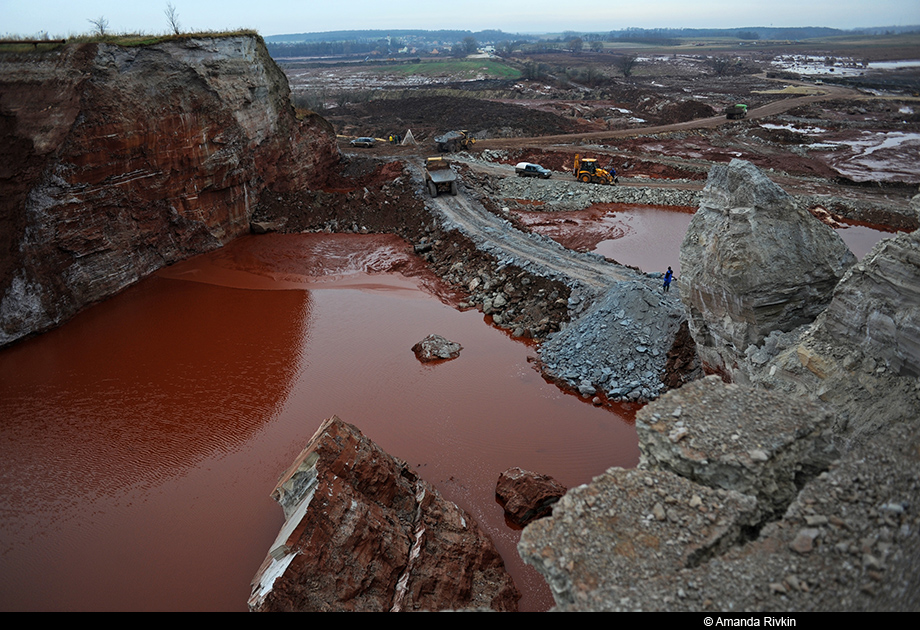 The rupture in the toxic red aluminum sludge reservoir as seen from the top of a remaining piece of the reservoir’s wall at the MAL Zrt plant in Ajka, Hungary. November 22, 2010.
The rupture in the toxic red aluminum sludge reservoir as seen from the top of a remaining piece of the reservoir’s wall at the MAL Zrt plant in Ajka, Hungary. November 22, 2010.
This week marks the first anniversary of the Upper Big Branch mine disaster in West Virginia which killed 29 coal miners. BagNews has been tracking mountaintop removal there with our series Dragline: Mountaintop Mining Watch. On the other side of the Atlantic, it has been six months since a similar accident with fatal consequences in Eastern Europe. Photographer Amanda Rivkin reports:
For sixty-three year old Geza Csenki, living in the small village of Devecser in western Hungary, last October 4 was the day the world folded. A torrent of toxic red sludge from a nearby industrial plant owned by MAL Zrt (Magyar Alumínium Termelő és Kereskedelmi) burst and flooded the town. Ten people died, including a 14-month old baby and hundreds were hurt and hospitalized. Csenki lost his home.
The collapse of the reservoir wall in Ajka wasn’t a freak accident nor was it an isolated incident. Remaining portions of the wall are not secure and while much of the sludge has emptied into the surrounding countryside, the rain and elements will determine how much more continues to leak out.
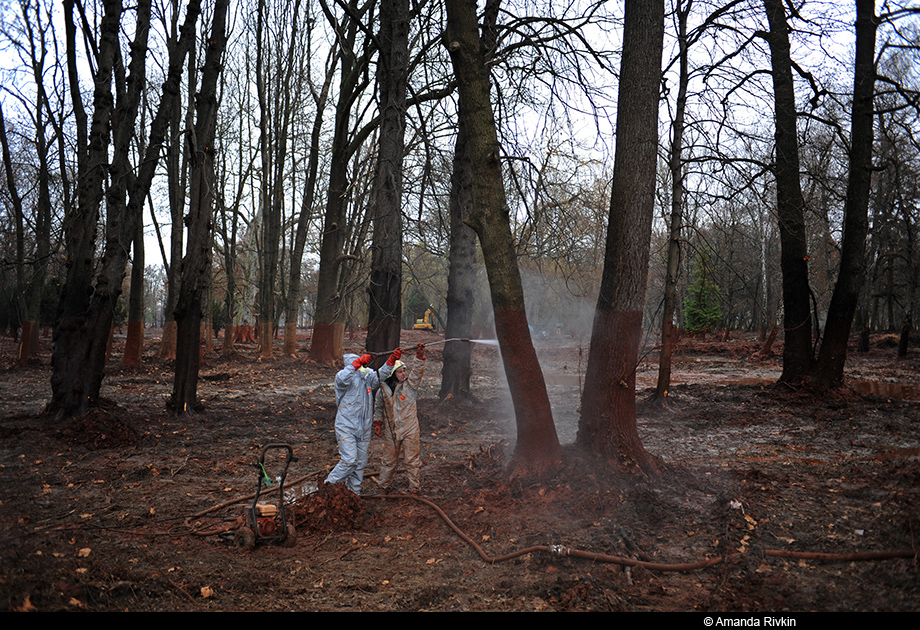
Clean up crews work to hose down contaminated trees in the castle park that schoolchildren used for play. November 20, 2010.
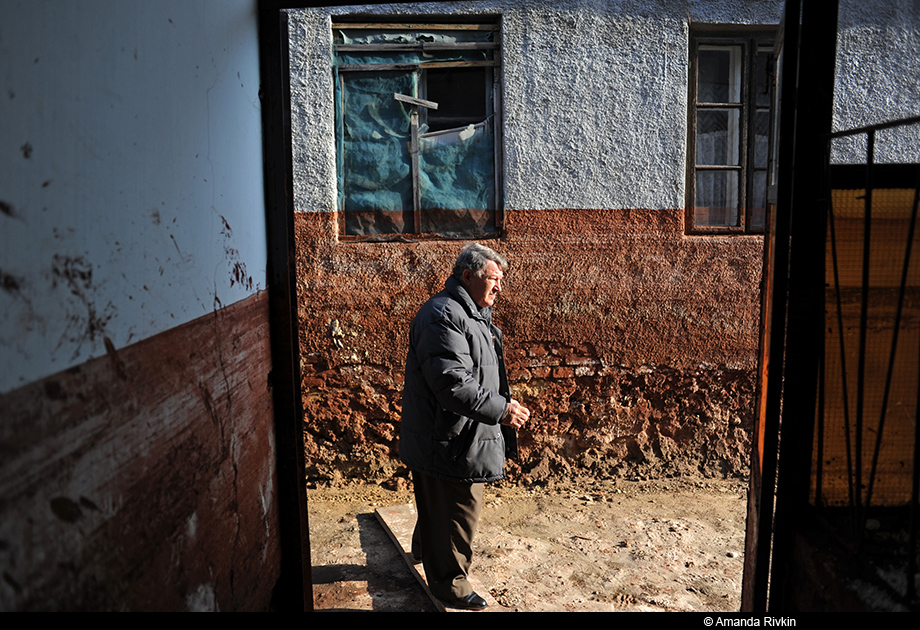 Geza Csenki outside the entrance of his ruined and uninhabitable home. November 25, 2010.
Geza Csenki outside the entrance of his ruined and uninhabitable home. November 25, 2010.
“I have a brother in North Carolina; I would have emigrated to join him had this happened 10 years ago, but now I have no idea what to do,” Csenki said between tears. Ironically, his troubles are compounded by the real possibility that he may have to close his children’s clothing store due to a lack of business — as donations to the community started arriving after the disaster.
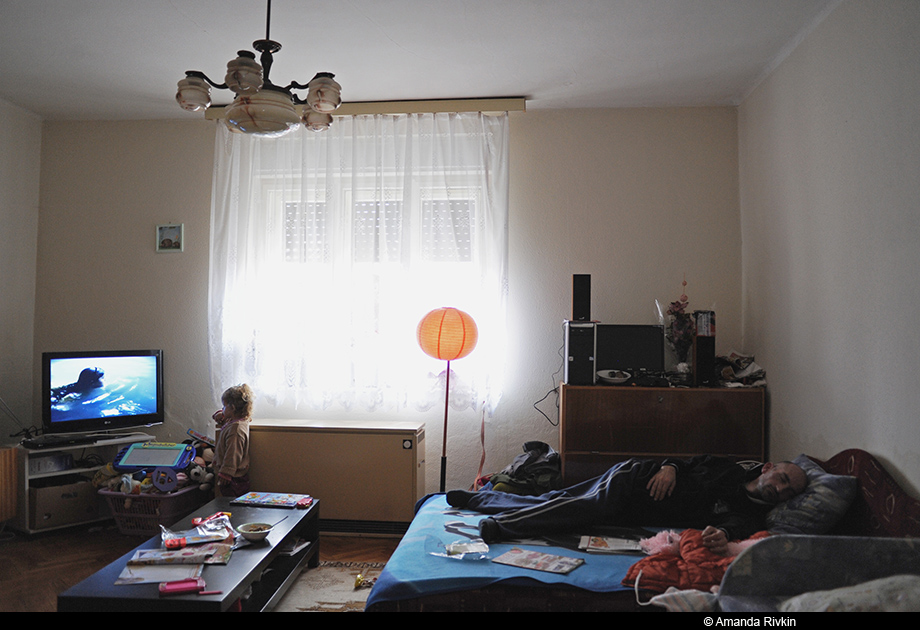 Dora Jazmin Juhasz, 3, watches television as her father, Zoltan Juhasz, 33, sleeps in their temporary home. November 23, 2010. Despite nearly drowning in the sludge, Dora survived without injury, but her 14-month old younger sister, Angyalka, was the youngest victim killed. Zoltan has burns that cover 67% of his body.
Dora Jazmin Juhasz, 3, watches television as her father, Zoltan Juhasz, 33, sleeps in their temporary home. November 23, 2010. Despite nearly drowning in the sludge, Dora survived without injury, but her 14-month old younger sister, Angyalka, was the youngest victim killed. Zoltan has burns that cover 67% of his body.
The pace of life in the two villages at the base of the reservoir, Devecser and Kolontar, has not returned to anything resembling normal. It is a post-disaster sort of normal, with a portable soup kitchen in a military tent still providing sustenance every day for many families. Many people have been forced to live with family members or take up in abandoned buildings. Some live in their place of work.
Csenki’s organizing efforts to protest the government’s crisis management have been met so far with half measures. They have won some concessions, such as the right to remain in their village and avoid having it labeled a toxic wasteland, even though many houses remain covered in sludge. In turn, Csenki has vowed not to block the main road with demonstrators. He has become aware of his own power as a victim of the tragedy.
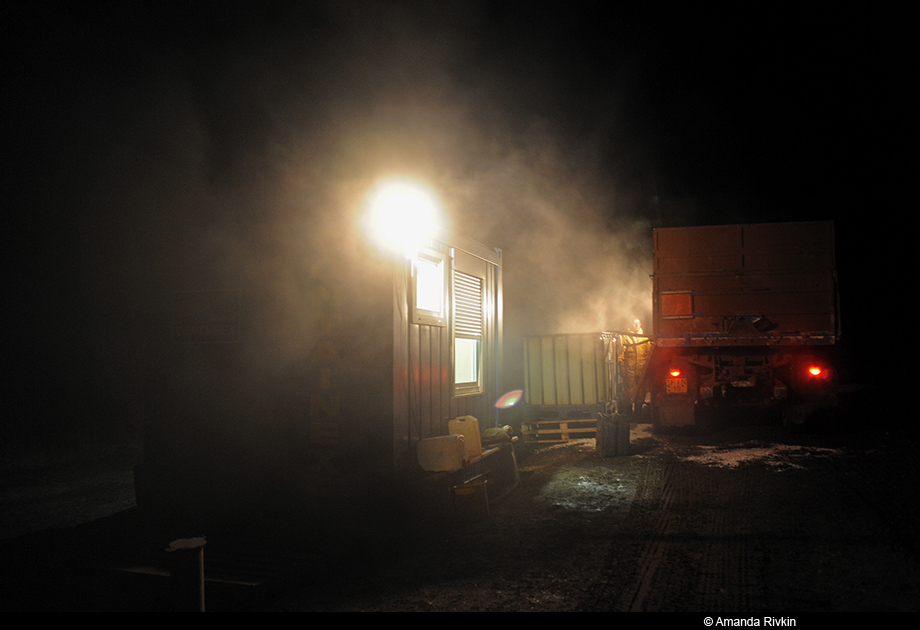 A mysterious light captures what is likely toxic dumping into the river alongside the M8 highway. November 25, 2010. While nobody would disclose what they were doing, they allowed for photos believing that a foreign photographer could not understand or ask questions.
A mysterious light captures what is likely toxic dumping into the river alongside the M8 highway. November 25, 2010. While nobody would disclose what they were doing, they allowed for photos believing that a foreign photographer could not understand or ask questions.
The government has also promised to build new homes by the middle of the next year for Csenki, his wife and others like them who survived the catastrophe. The battle for compensation continues and they wonder why they can’t be given money to rebuild themselves rather than rely on a system that has so wronged them.
The accident is part of a larger, looming problem concerning the state of post-Soviet industries in the region. Privatization during the early 1990s forced the regulatory burden from the state onto the private sector. So for the residents of Devecser and Ajka, unfulfilled promises to revise industrial inspection codes in the future bring little comfort.
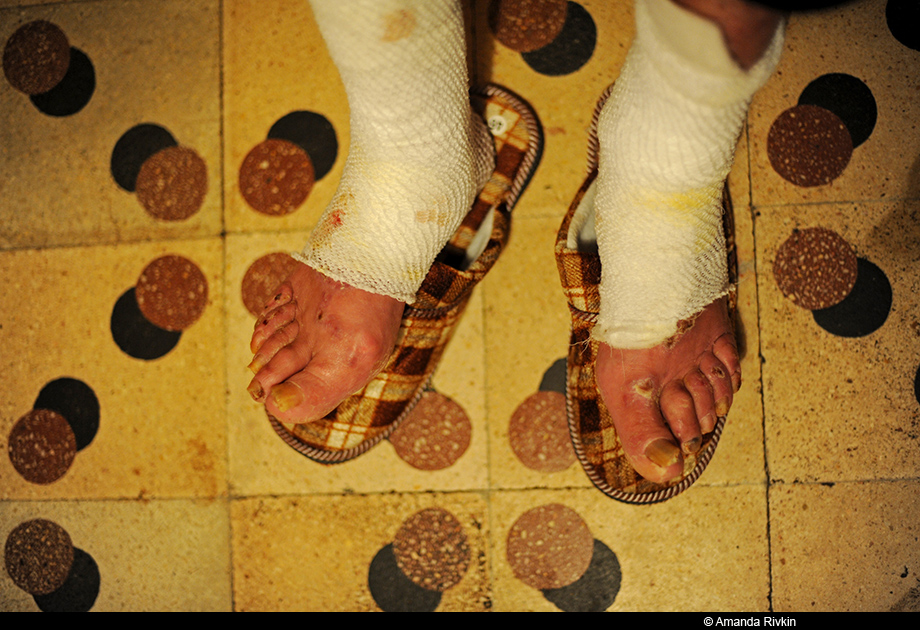 The feet of Laszlo Markos, 61, who was severely burned in the accident. November 23, 2010.
The feet of Laszlo Markos, 61, who was severely burned in the accident. November 23, 2010.
Zoltan Bakonyi, the largest shareholder of MAL Zrt, was briefly arrested. He appeared on television to say the aluminum sludge might not be so harmful after all. His father Arpad Bakonyi was a key player in the privatization of the Hungarian aluminum industry.
“How can they say this?” asked Iren Istvanne Nemeth, 71, a survivor of the accident. Nemeth removed her shoes and socks and showed off burns and blisters that she said covered half of her body. Her son Istvan was killed.
Nemeth had been released from the hospital after six weeks. At the time of the disaster, she was forced to wade in the toxic sludge until emergency rescue workers arrived. Since the accident occurred during the middle of the day, it was mainly the shut-in elderly and those who lacked upstairs floors who had nowhere they could run to safety.
“I have had a difficult life,” Nemeth concluded, the same day she was supposed to move into a shelter for the displaced.
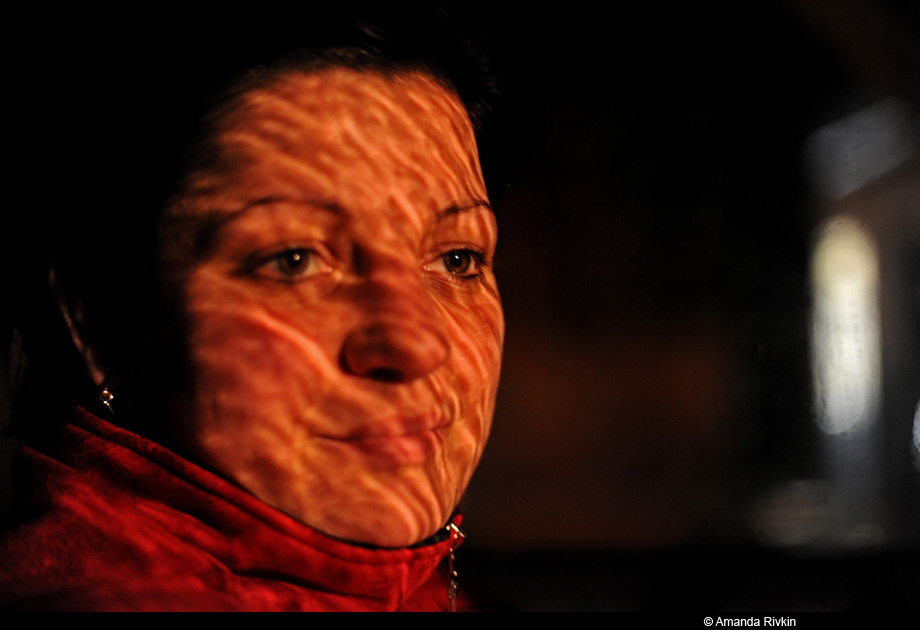 Melinda Lehmann, 28, sits in her car outside her family’s bar in Kolontar, Hungary on November 22, 2010.
Melinda Lehmann, 28, sits in her car outside her family’s bar in Kolontar, Hungary on November 22, 2010.
–Amanda Rivkin
PHOTOGRAPHS by AMANDA RIVKIN
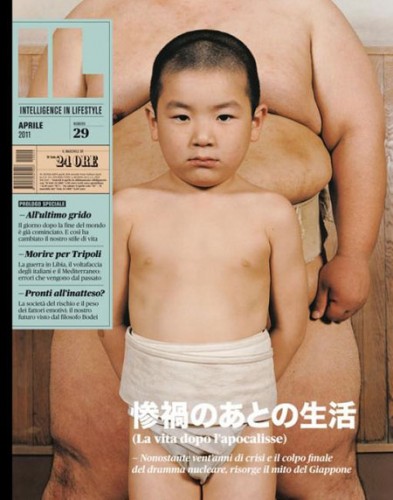

Reactions
Comments Powered by Disqus